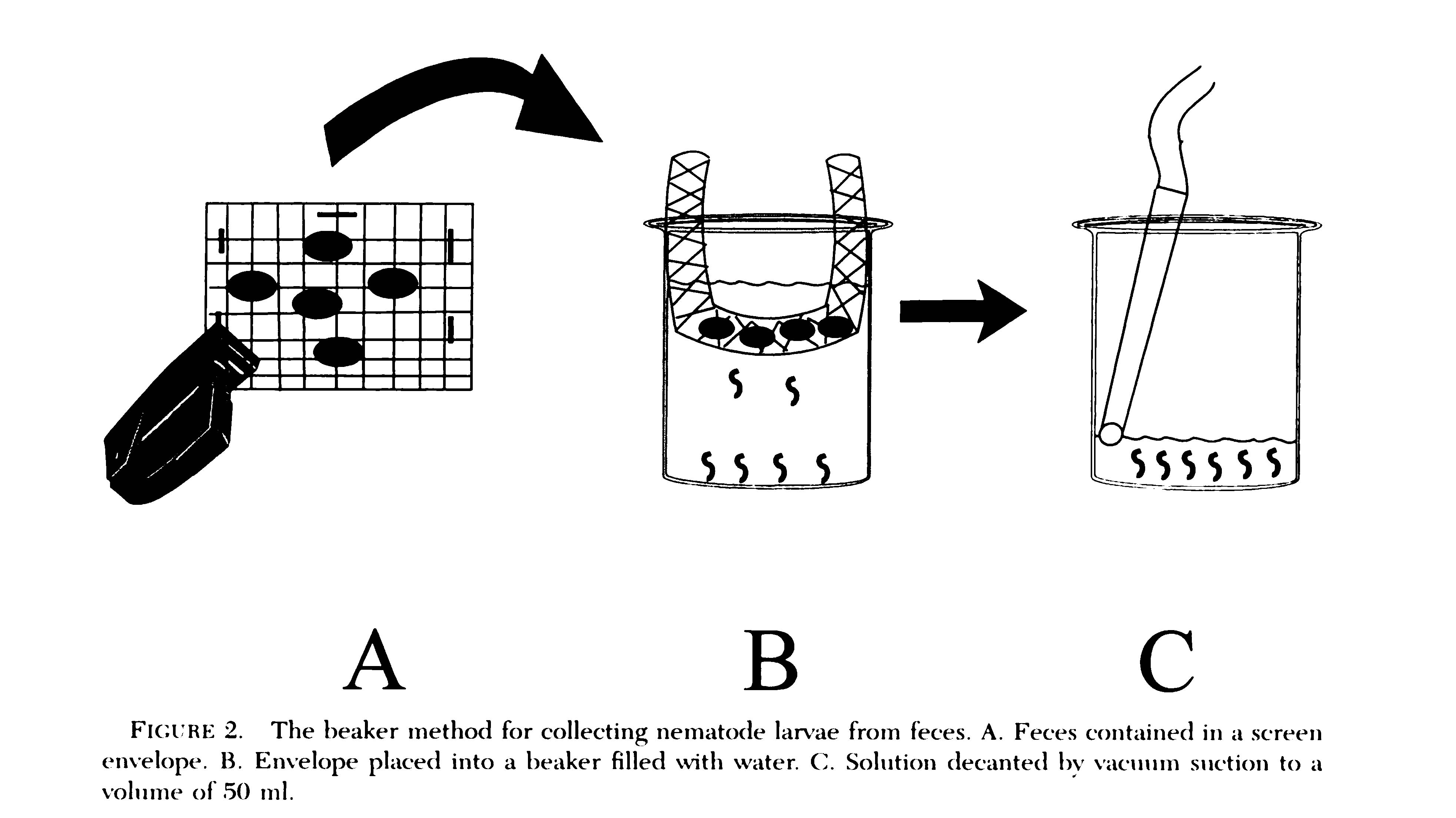Baermann Examination
This technique is used to recover live nematode larvae from fresh (or sometimes frozen) faeces or, on occasion, organs, tissues or vegetation.
Purpose
Principle
Equipment
12cm x 12cm square of window screen
Cheesecloth
Vacuum pump, pipette or syringe
Centrifuge Test tubes
Compound or Dissecting microscope
Procedure

1. Fill a 250 ml breaker almost to the top with tepid water.
2. Create a small “envelope” by folding a square (~12cm x 12cm) of window screen in half.
3. Line the envelope with a single layer of cheesecloth then place faeces (5-10g) in the envelope
and staple closed the open edges.
4. Submerge the fecal sample in the beaker maintaining the sample near the water surface.
5. Leave set up for at least 6 hours (preferably 18-24 hours).
6. Remove envelope and discard.
7. Being careful to disturb the sediment as little as possible, decant, using gentle vacuum suction,
pipette or syringe, all but ~50ml of the beaker contents.
8. Centrifuge sediment in test tube for approximately 10 minutes at approximately 1500 rpm.
9. Examine the sediment for the presence of larvae.
Variations
Traditionally, the funnels were used to hold the water and faeces; more recently, these have been replaced by beakers, which increases larval recovery. As with flotations, the Baermann technique can be quantified.
Forrester SG and Lankester MW (1997) Journal of Wildlife Diseases 33: 511-516.

